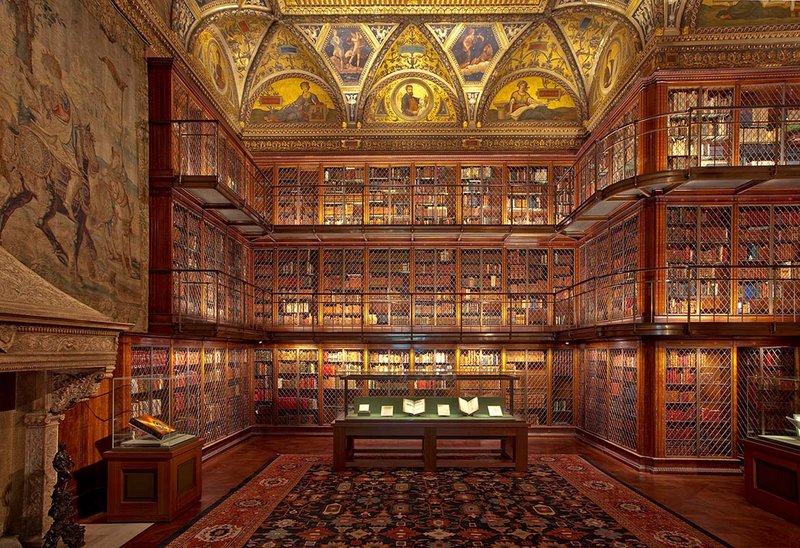3. J.P. Morgan’s Mansion & Library

A contemporary of Carnegie and Frick, John Pierpont Morgan was the Gilded Age’s most powerful financier, which earned him the nickname “the Napoleon of Wall Street.” Unlike many of his contemporaries, he wasn’t interested in living on Millionaires Row or flaunting his wealth. He preferred to use his considerable fortune for philanthropic endeavors and to amass an incredible collection of European art and books, with the goal of turning New York City not just into the financial capital but also the cultural capital of the United States.
By 1900, his Murray Hill residence had become overcrowded with his art, so he purchased the two adjacent properties and convinced Charles McKim to design his new home by agreeing to finance McKim’s passion project, the American Academy in Rome, for life. A master architect with myriad influences, McKim designed an Italianate home and library, taking inspiration from a number of Renaissance palazzos, including Villa Giulia and Palazzo Massimo alle Colonne in Rome as well as the Palazzo del Te in Mantua. The interiors are richly decorated with marble, lapus lazuli columns, mosaics, damask wall coverings, and lavishly painted ceiling frescoes. After his death, Morgan’s son Jack fulfilled the wish left in his will that his library be turned into a museum.





